660S 8X4 Highline – ‘V1 Rotate’
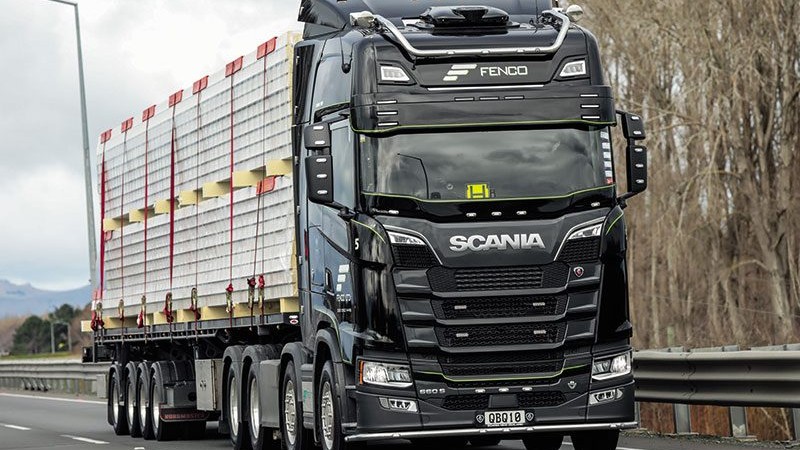
PART 2
It’s a term pilots say at the point aborting a lift-off is no longer an option, meaning there’s not enough runway left in the event ‘up, up and away’ is also not an option.
Latest addition to the Fenco fleet is No.5, a Scania 660S Highline 8×4 tractor. It’s also little bit ‘spesh’, as the trendies say these days, being the first of that model, cab, and configuration recipe in the country.
The visual impact of its height divided by length is immediately apparent the moment it comes into view, and for us, that was the hairpin switchback at the top of the first summit on Hundalee Hills south of Kaikoura.
Down through the gully and up the second half of the SH1 trucking landmark, the majestic black machine glided past with the trademark ‘thump-thump’ a Scania V8 voices to the world when resident in the basement of its operating rev range.
Driver of Rumble Seat is Lloyd Rutherford, and he pulls over on top of the second summit for handshakes and introductions. Up until then it had been all cell phones.
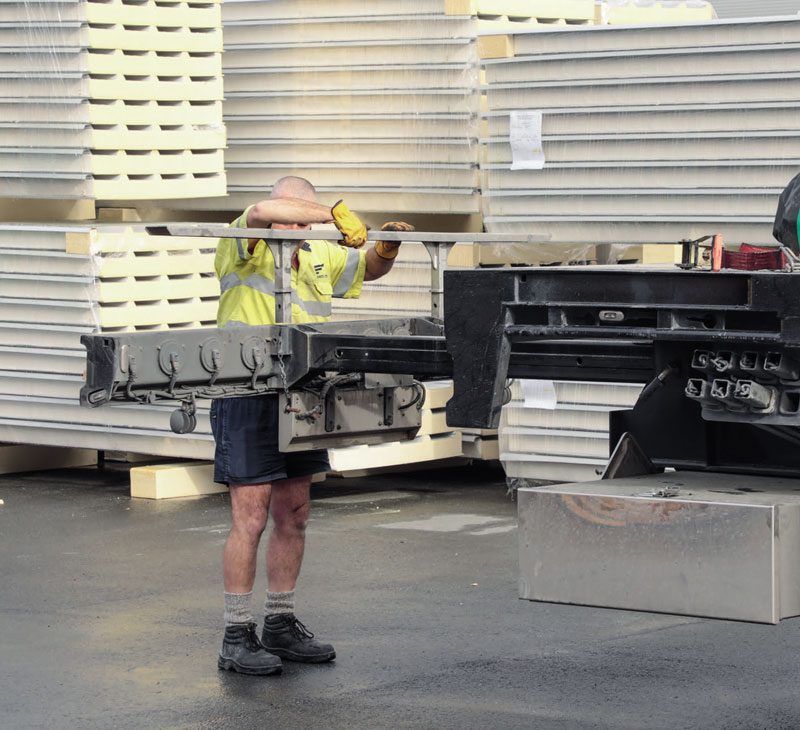
A warmer soul you would not meet. Lloyd was a happy bloke before the truck’s arrival, so the ‘big griff’ is simply making good days better.
Southbound, the Hundalees mark the point where SH1 bids farewell to the coast, swinging up, over and into the gorgeous green rolling hills of inland North Canterbury. We spent an afternoon tracking the truck with its slick new Roadmaster 15.7m flat-deck super-quad into the Garden City.
Lloyd was nearing the end of another North Island mission and looking forward to a day off on his Oxford lifestyle block. The North Island is a regular run for him, and this one included a slight finessing of the fifth-wheel’s location just to finish the build off.
On the back was a load of PVC pipe, so the 660S was in no way burdened by the task at hand.
The Scania buddies up with an ex-Douch Transport Volvo FH700 also towing a Roadmaster flat-deck super-quad. Together they form the ‘hard to cart’ division of Fenco’s construction cartage division. Both trailers have the pull-out light bar extension at the rear that makes carting lengths up to 20m a piece of cake, and both are festooned with every accoutrement required to do almost anything. Large stanchions, deck pegs, head and tailboards, bearers, straps, chains, corner boards, and that ultimate tool of trucking utility … the cover. There’s not much these machines can’t achieve, and with an HPMV rating of 48 tonnes, they’re good for a payload in the 28,500kg bracket.
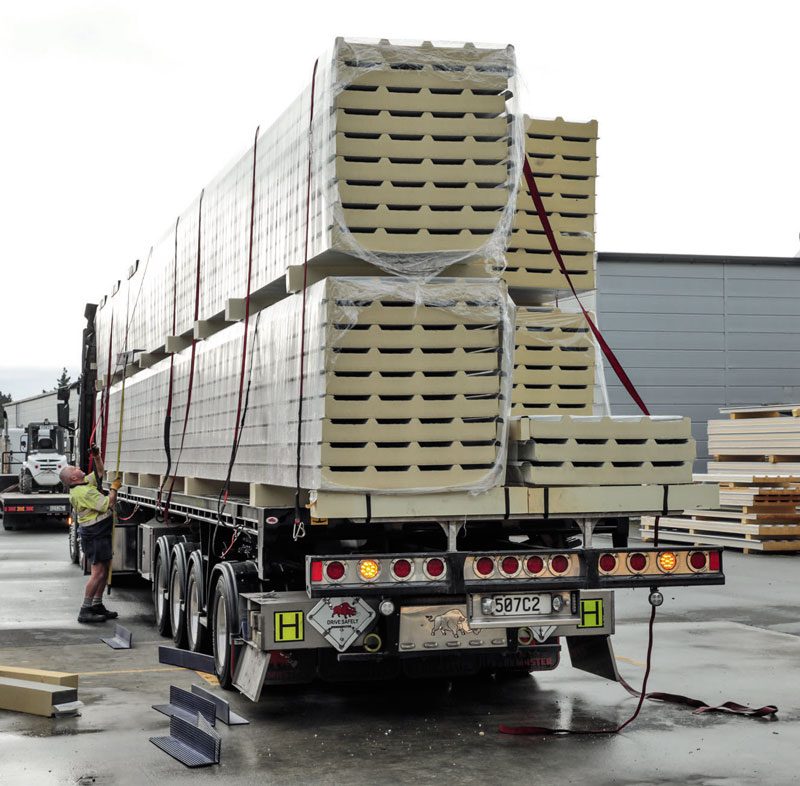
Life’s a breeze in the Rumble Seat
“The old V8 cars, they had rumble seats, and it’s a play on that,” says Glen Stuart in response to the origins of the truck’s name as we watch the 17m-long steel-skinned, insulated wall panels being carefully put in place by ace tally-handler driver Johnny. They look gargantuan, and they are. Lloyd had to extend the tail bar out 1.3m, and getting them inch perfect requires a deft touch on the controls. Two-degrees yaw in the centre is 30° at the extreme.
They’re a delicate bunch too, with flashings in need of TLC. However, there’s a system in place here that works, and both men know it implicitly.
“You just can’t trans-ship this stuff or consolidate it with something else,” says Glen. “Doing that ends in a claim, and frustration at the delivery point. We have a once-on, once-off policy for this, no exceptions. Touch wood, to date it’s been fine.”
For all its size and delicacy, taking the time to prepare and load it well means there is little issue restraining it. For all its size the load was only 16 tonne. Corner boards and straps with a gut strap on the tail, and we’re away from a rainy, albeit rapidly clearing, cold morning in Christchurch, bound for a building site in sunny Nelson.
Remembering Mark Fletcher’s Mercedes-Benz Actros 2663 back in August 2016, it was the first fully flat floor we’d encountered in a cabover and it seemed weird seeing nothing between us and him at the tiller. How fast familiarity arrives as we sit high in the 660S, thinking nothing of it.
One of the world’s most famous V8s at four-valve 16-litres displacement with Scania’s XPI injection, and Euro-6 via double dose SCR. With a power to weight ratio in this output setting of 13.7kW/ tonne (18.4hp/tonne), we were the living embodiment of the USA’s famous commercial vehicle publication Large Car. Even running gross weight, the 660S will bumble along at 10.1kW/tonne (13.5hp/tonne).
Yet even that statistic undersells the story. The degree to which the lastest G33CM 14-speed Opticruise – and its ilk – help the progression of modern trucks has to be worth another 37kW at least. The G33CM sports a crawler and overdrive and deploys a planetary gear to facilitate reverse, rather than a traditional reverse gear.
The Fenco machine runs proprietary hypoid differentials and rides on Scania air suspension from bow to stern. Brakes are disc obviously, with ABS and EBS, and safety abounds with all the standard expectations in place – adaptive cruise, emergency stop, lane departure, and hill-hold.
Being an 8×4 tractor on Euro-6 means chassis packaging is a challenge. As a result the Rumble Seat runs a single modest diesel tank, although there are options around that also if it turns out to be too restrictive.
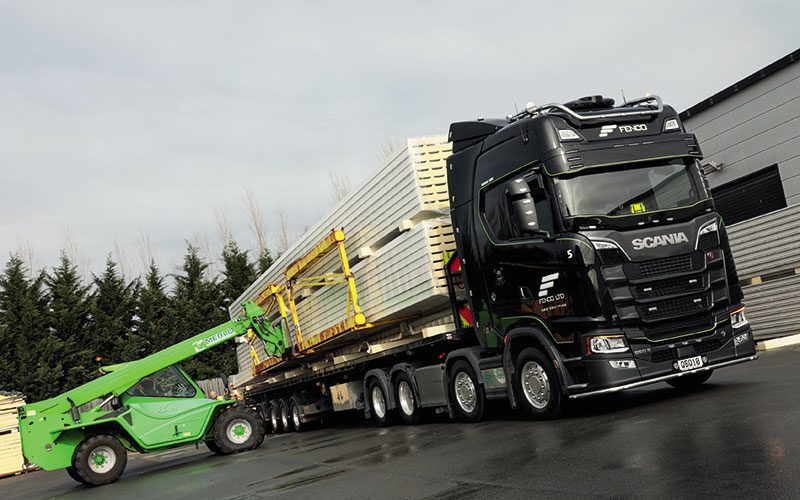
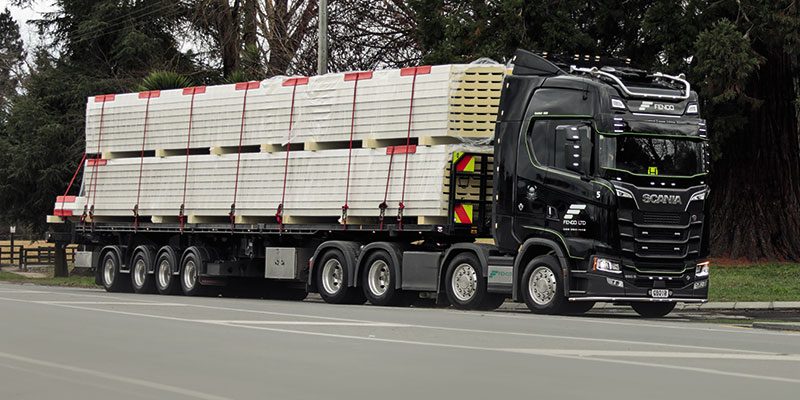
Underrated
Rolling up the Balmoral Straight toward Culverden, I reflected on Glen’s commentary comparing the aviation industry with trucking. That lead me to his thoughts on the respective evolution of modern aircraft and heavy commercial vehicles, and from there I ended up at my interview with Traton’s Dr Frederik Zohm at the time of the New Generation MAN launch in 2019, when he was on the research and development board at MAN.
Zohm said such is the level and pace of technological advancement in modern trucks, merely having a licence to drive a heavy commercial vehicle wouldn’t be good enough. In order to extract the optimum output from the investment, OEM-specific training and qualification would be required. If you’re MAN-rated, that means you know how get the absolute best out of the truck. The same is obviously the case for Scania, et al.
He’s dead right of course. The reality is attaining your Class 5 licence is only saying to the world you can keep something really big ‘between the ditches’, and have some idea of what it can carry, its dimensions, and how long you’re allowed to drive it. There’s the road code bit, but that should be well entrenched by Class 5 – cue cynical cough.
Training the driver to extract the most from the machine has always been the owner’s responsibility, and sadly one of the more gaping holes in commercial vehicle ownership. Historically, the industry’s behavioural and emotional disrespect for itself has largely led to the ‘Buy it, get someone’s arse in it, and get it moving’ approach we’ve all evolved with. A reluctance due to the lack of time available, and the cost of getting an expert in for a week to teach the driver how to get the most out of the asset he or she will drive is one of the great operational oxymorons. If you can train a driver to reduce an average fuel burn from 1.8 to 2kpl in a truck running 110,000km per annum over a decade, that’s a hair under $127,000 to the bottom line over its life based on a fuel price of $2.20per litre. And that’s just fuel; add to that the tyre wear, component wear and tear…
‘Oh yeah, but real life’s not like that!’ sung the chorus in response. Well, firstly 0.2kpl improvement is not 1.4kpl, meaning it’s not marketing spin, it’s infinitely more realistic. Secondly, as an industry, real life is whatever we decide it is. If we want to run around like chooks with our heads cut off in a state of over-promising and under-delivering to ourselves, that’s on us.
Those musings over, Lloyd was eagerly awaiting the arrival a couple of days later of Scania’s driver-trainer Chris Foote. He was genuinely excited to learn how to get the most from his big critter, and discover all the things it knows it can do, that he doesn’t. We’ve touched base of late with a couple of folk who have had a Foote treatment, and by all accounts, it’s the stuff of epiphany.
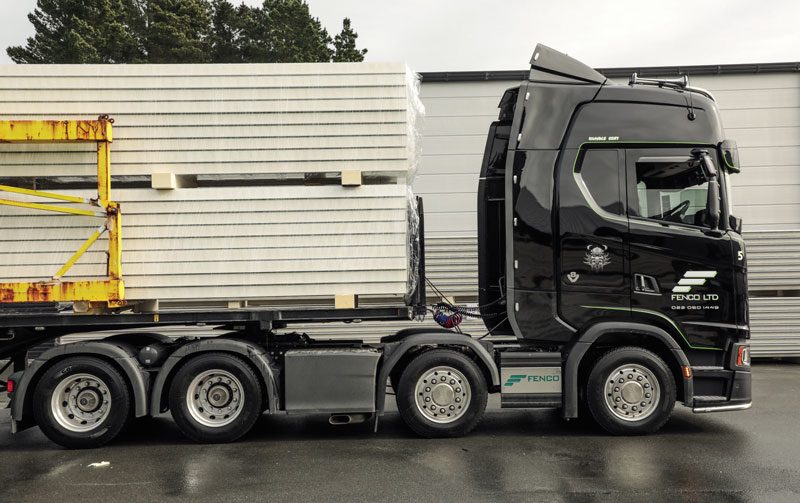
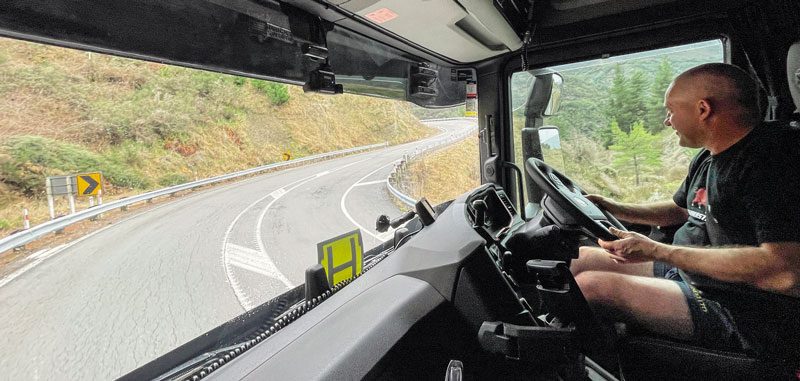
Flying high
South Islanders are a lucky bunch. Generally speaking, their roads are demonstrably better than ours in the north, until you visit the Lewis Pass and Shenandoah sections of SH7 and 65 respectively. Yes they’re dippy, divey, and windy, but they’re also narrow and the surface is stuffed. Think of that section as a postcard from the north.
It all meant we were glad of the full air suspension under the cab and chassis. Having said that, there was a little ‘turbulence’ – as you’d expect – when you compare the Fenco 600S with the Martinborough 770S. We’re talking ride and handling, of course. No, we didn’t get any kick from the second steer, but that high cab on a short wheelbase certainly moves about a bit more, especially when there’s a big semi on the pin. Two giant slivers of steel chassis 15.7m long will always remind you they’re along for the ride, even subtly. We’ve come a long way, but physics is physics.
Being an S cab with its flat floor and sporting a sleeper means the S in this grille nomenclature gets shunted to the right of the digits. A gentlemen’s agreement between Scania and Daimler to avoid the potential of confusion between one marque’s premium truck and the other’s premium car lines. Really? Maybe I’ll park outside Auckland Grammar next week when the school run is on and see who got confused.
We’ve done the S cab of recent in the Martinborough truck (New Zealand Trucking magazine April 2023). It’s a delicious house with all the right things in all the right places and made of all the right material. Being a Scania there’s almost colour too. In fairness, there is: the little red flashes around the dash binnacle plus a couple of daring dabs in other places. Careful now, you crazy kids!
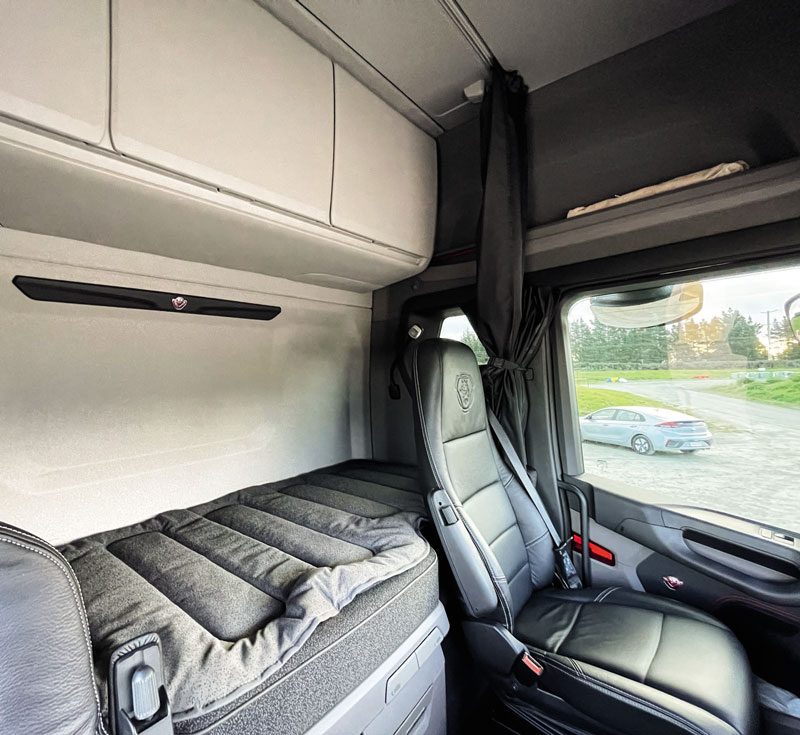

The Fenco truck had the leatherette finish, a single bunk and cupboards in the back wall of the sleeper. With 2070mm of headroom, and that level of storage, it does pretty much qualify it as a motorhome. Lloyd doesn’t have the coffee machine in his Griff: #firstworldissues. You need some reason to get out. If it had a percolator, why would you bother?
The cockpit, position, visibility, and controls are NTG Scania, so difficult to fault. Like we say, see the April issue.
The road improves somewhat north of Murchison and what was rain, gloom, and even a snow flurry on the top of the Lewis Pass, transitions to a glorious Tasman day north of the Hope Saddle.
The big black Fenco combination rolls down the Clarke Valley absorbing kilometres effortlessly before bolting up the Spooners hill at steady 54km/h in 11th gear and 1200 – ‘thump thump’ – rpm.
Through Wakefield and the outskirts of town, Lloyd rolls onto the building site in Stoke. A bunch of friendly blokes from Gibbons Naylor construction come across and they hatched a plan with Lloyd about unloading requirements in the morning. On completion, they asked where Lloyd intended staying, and did he need a ride somewhere?
“Yeah, nah mate. I’ve got all I need right here.”
Too true.
Read more
Full to overflowing
0 Comments9 Minutes
April 2025
0 Comments1 Minute





